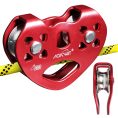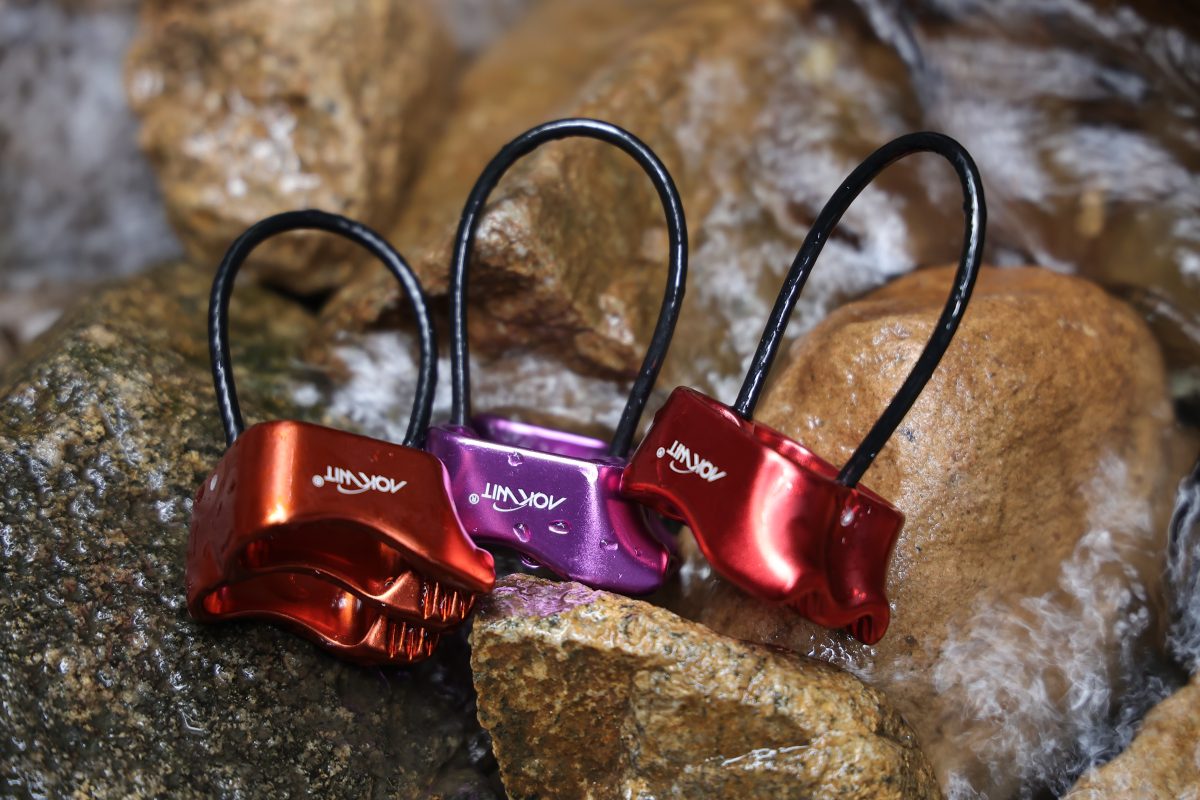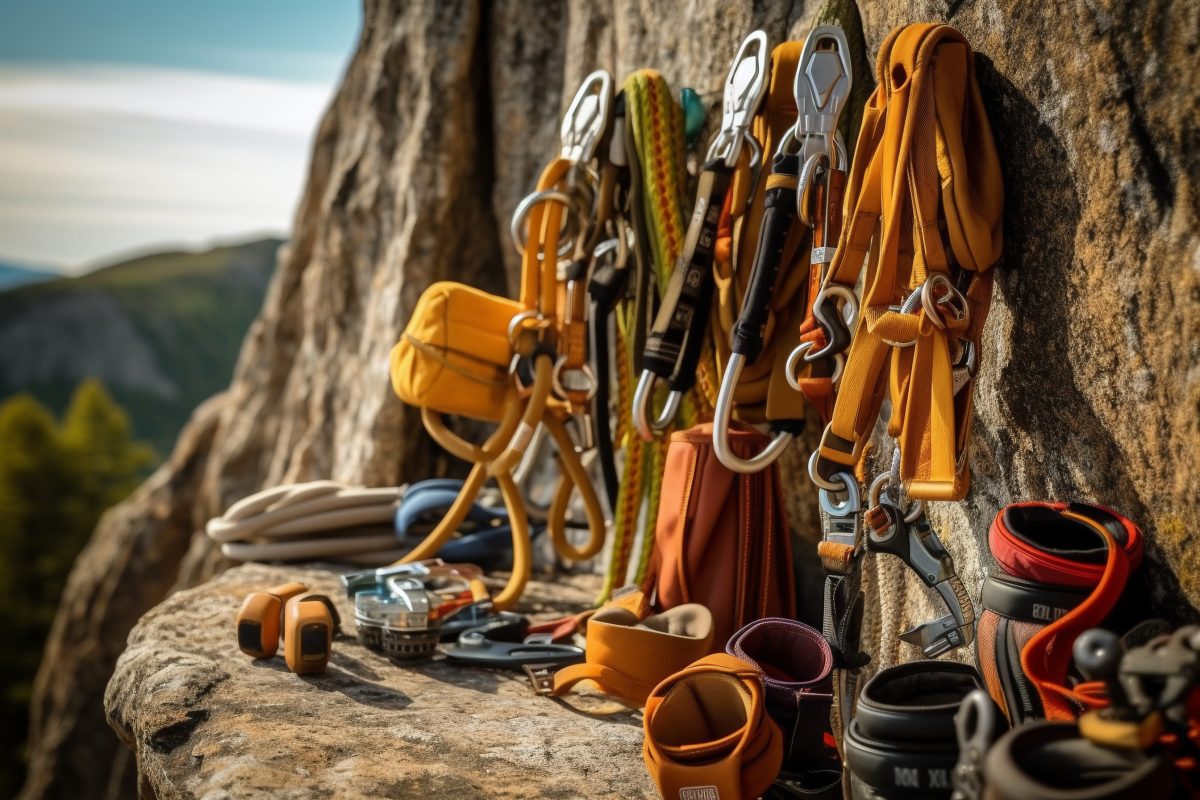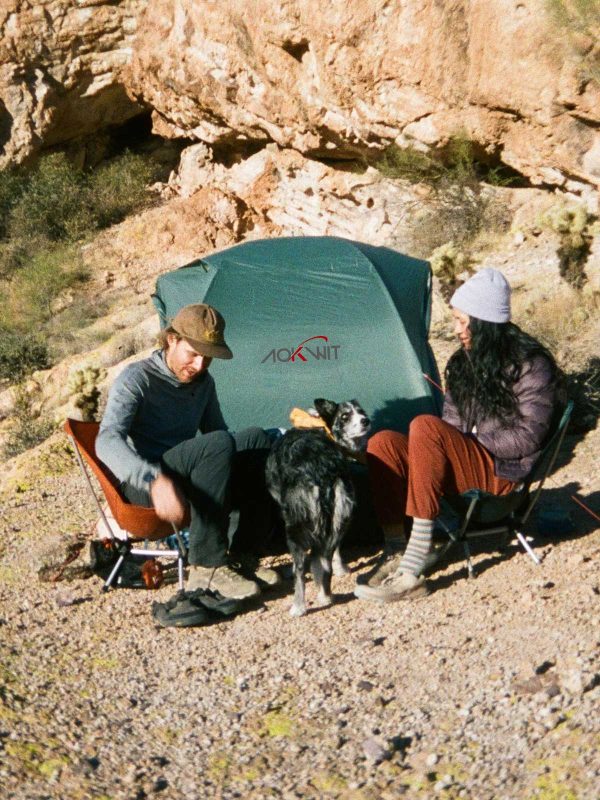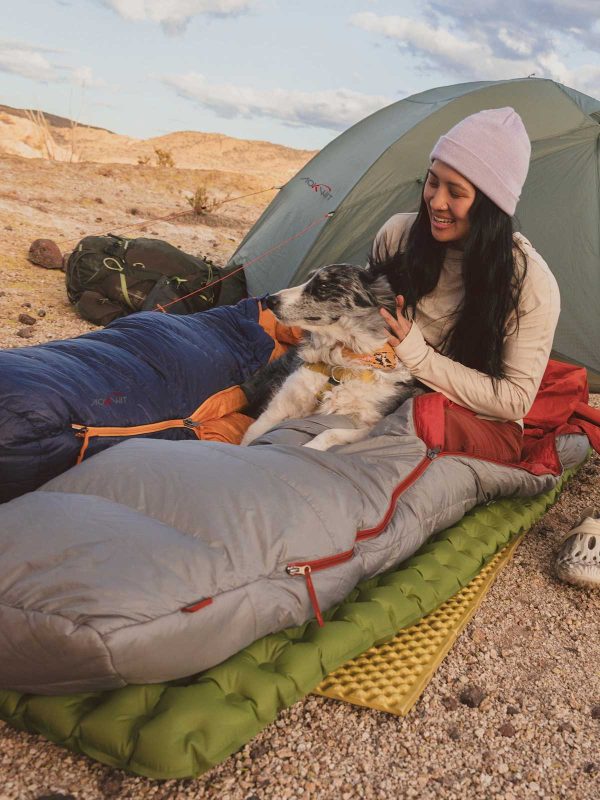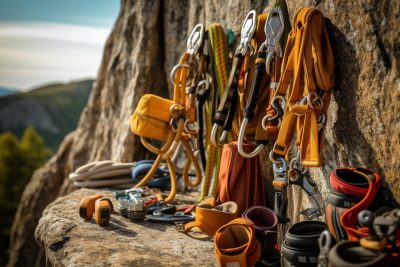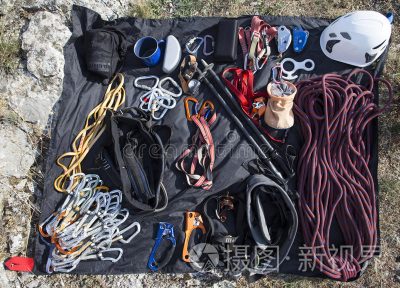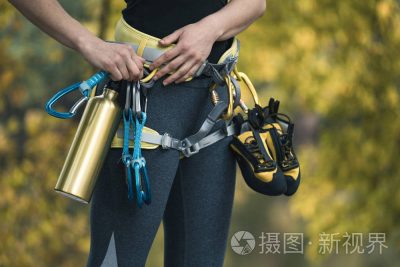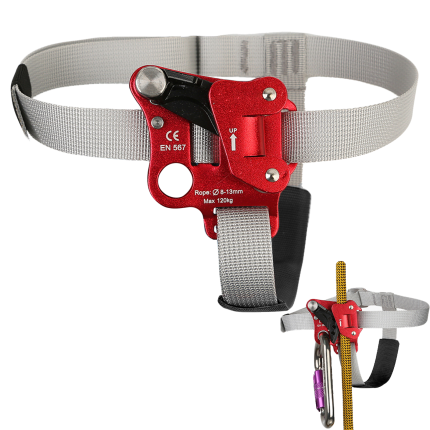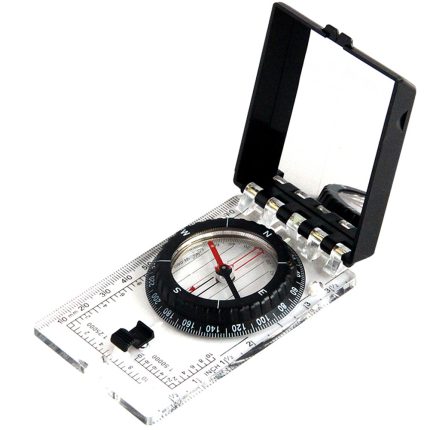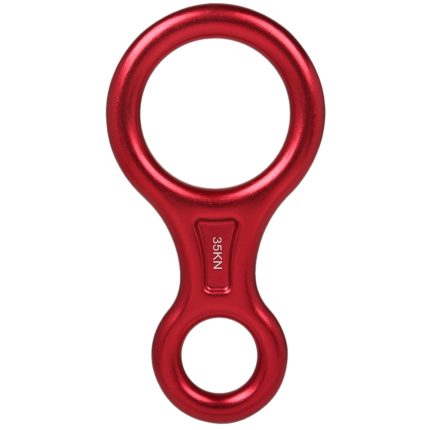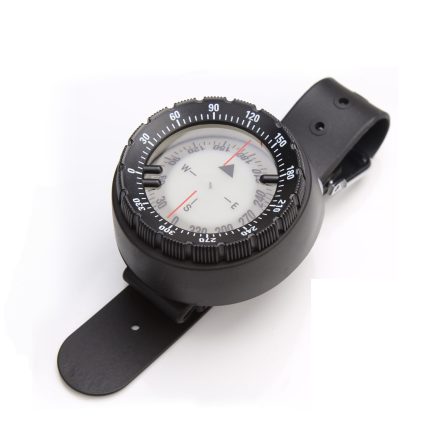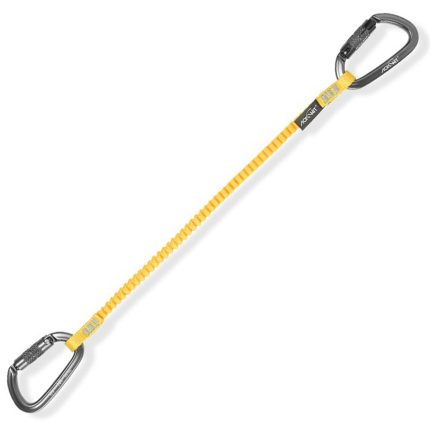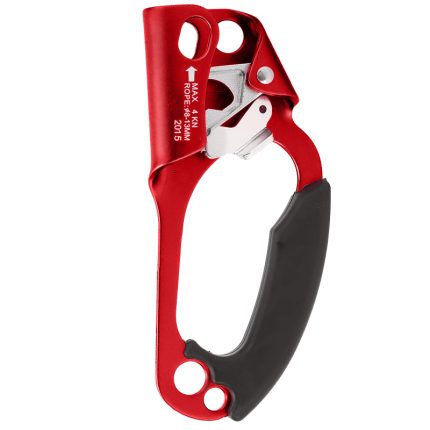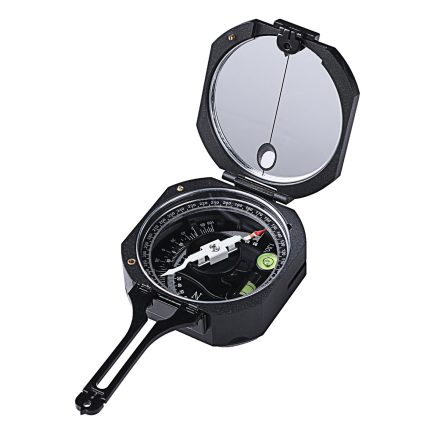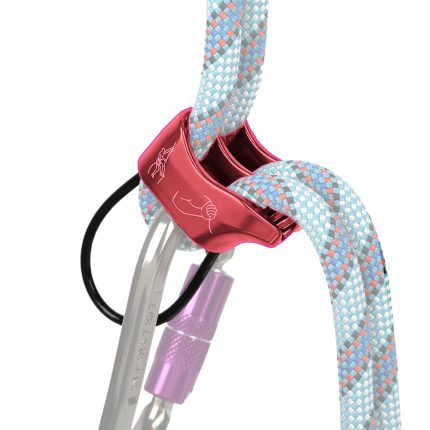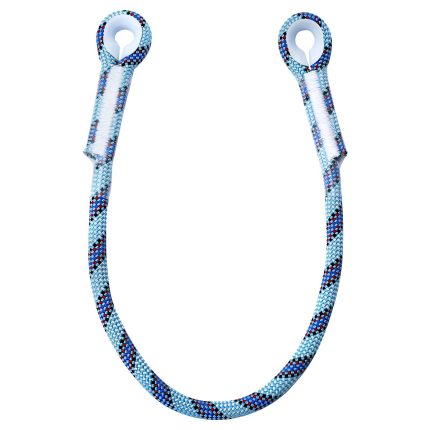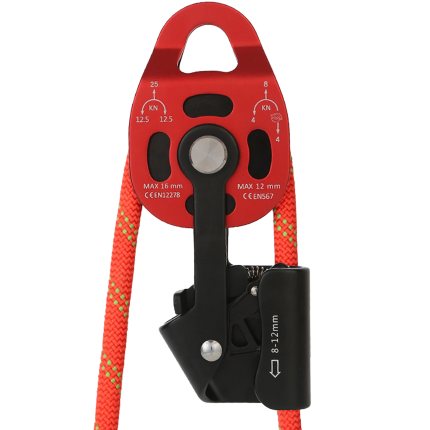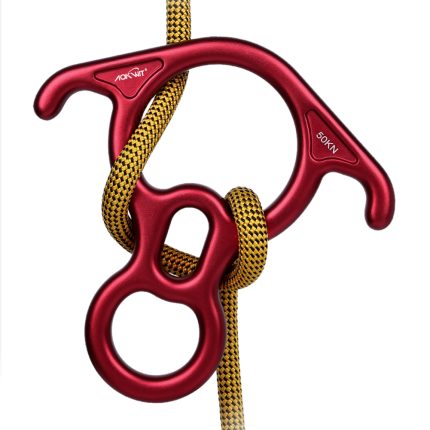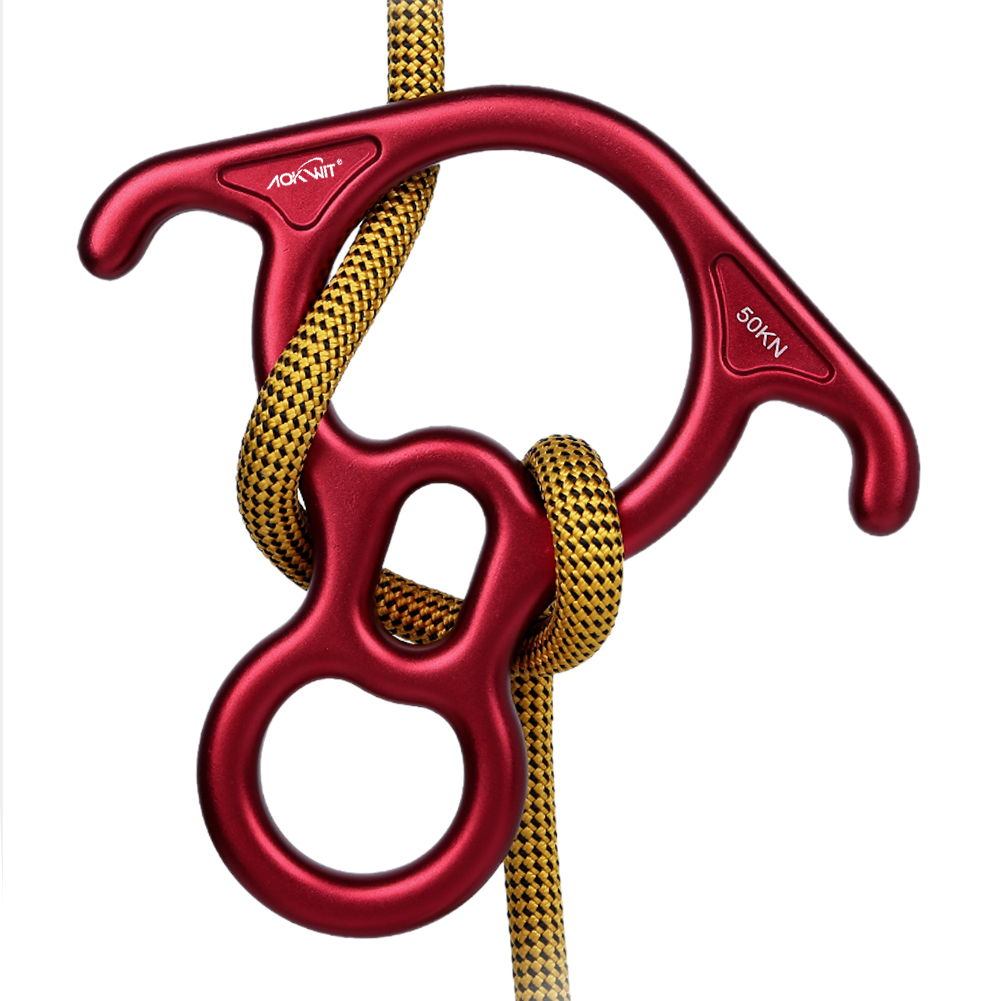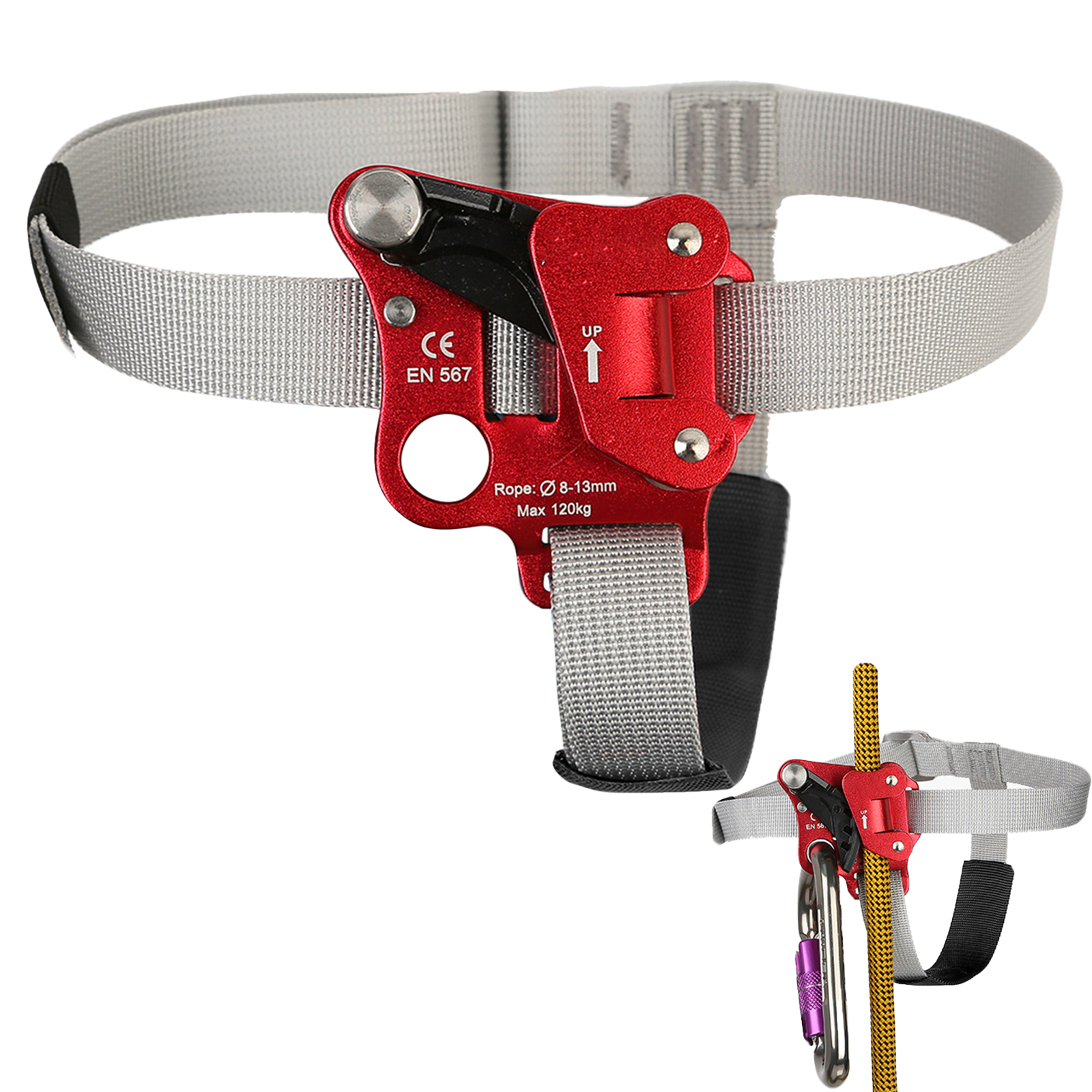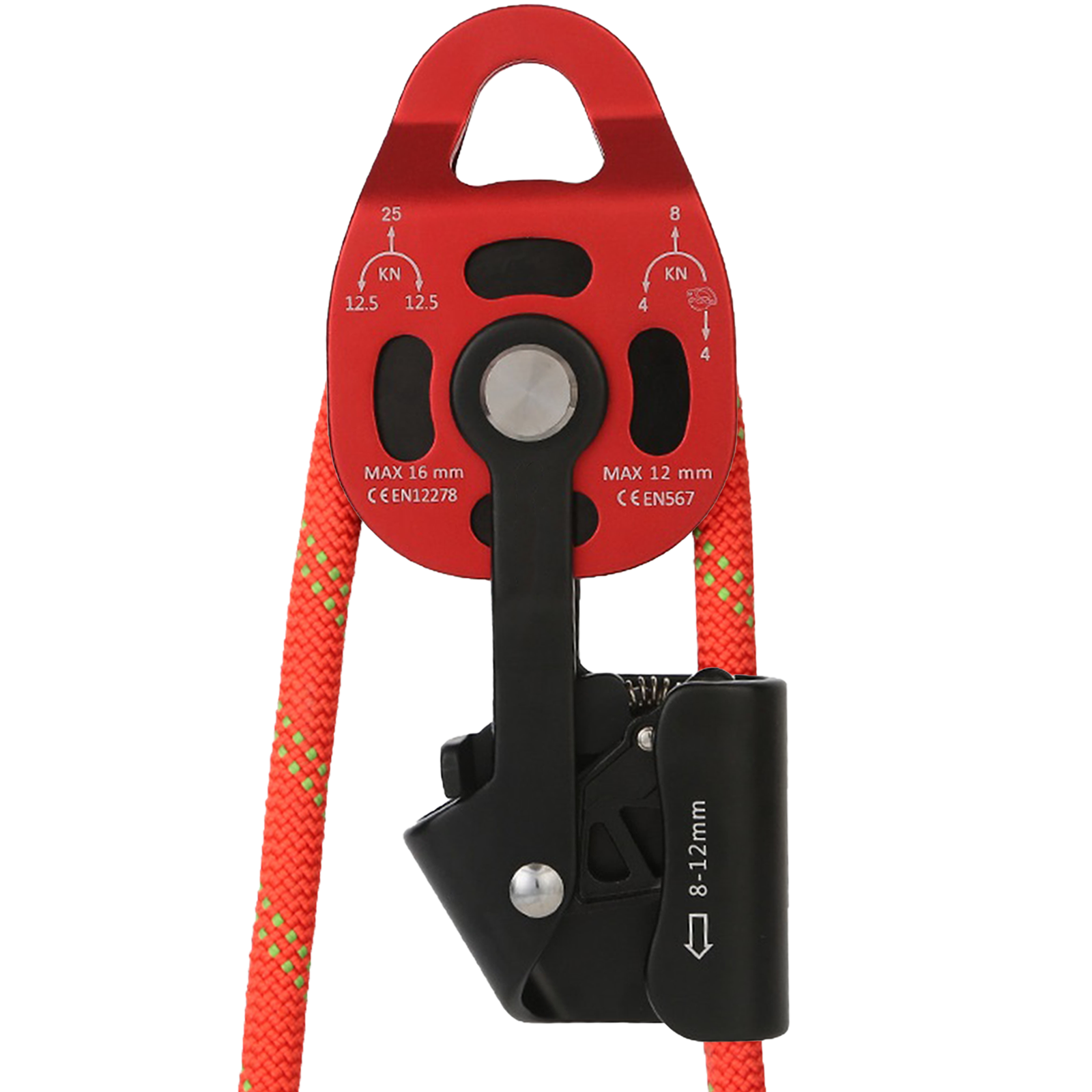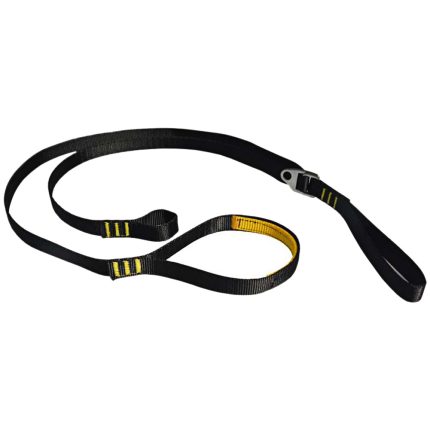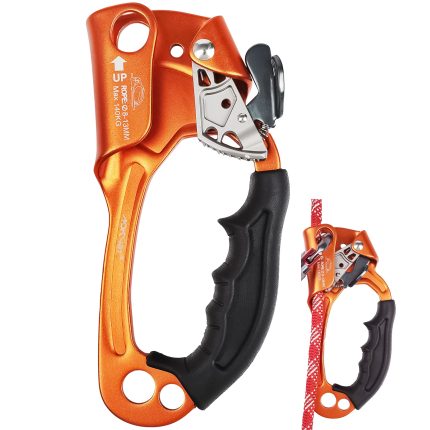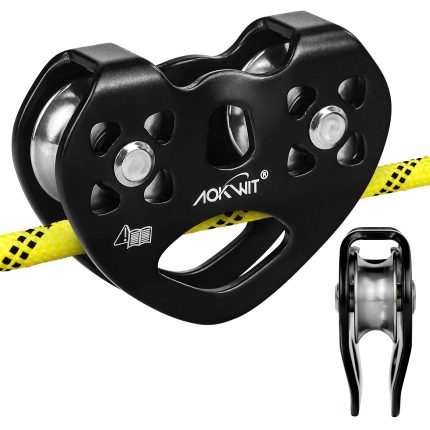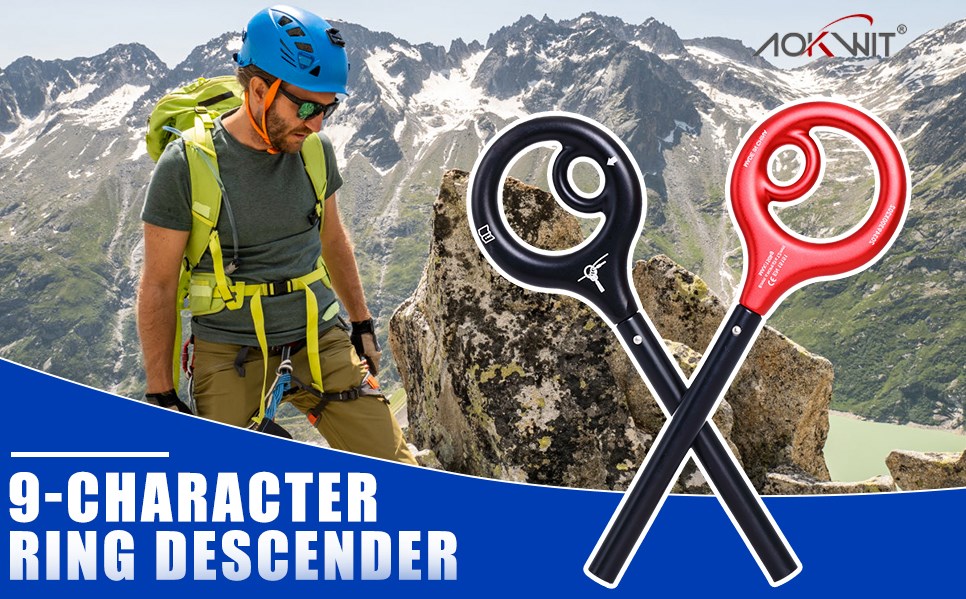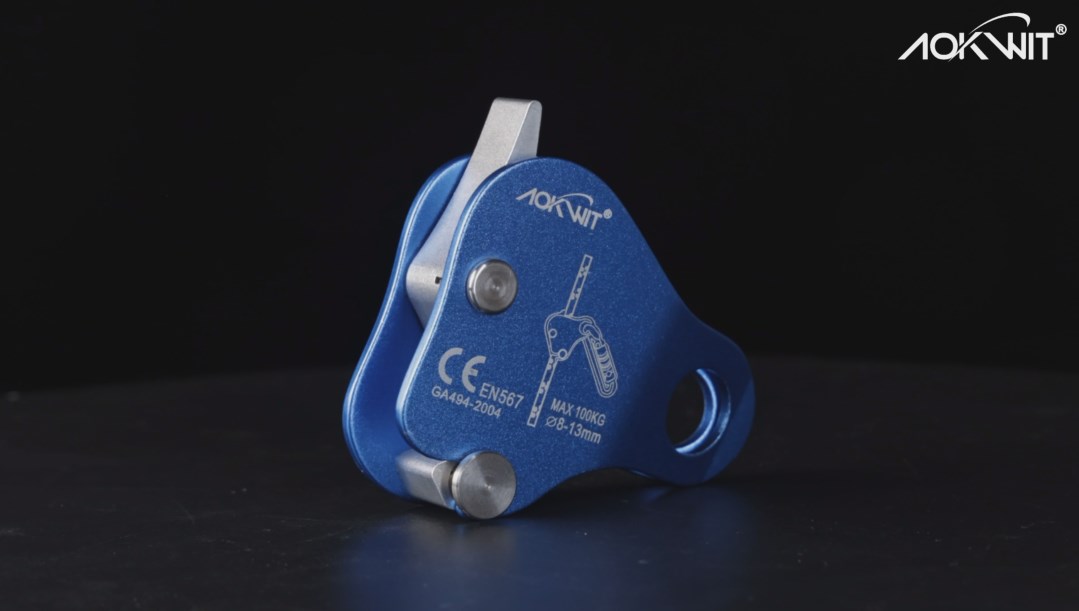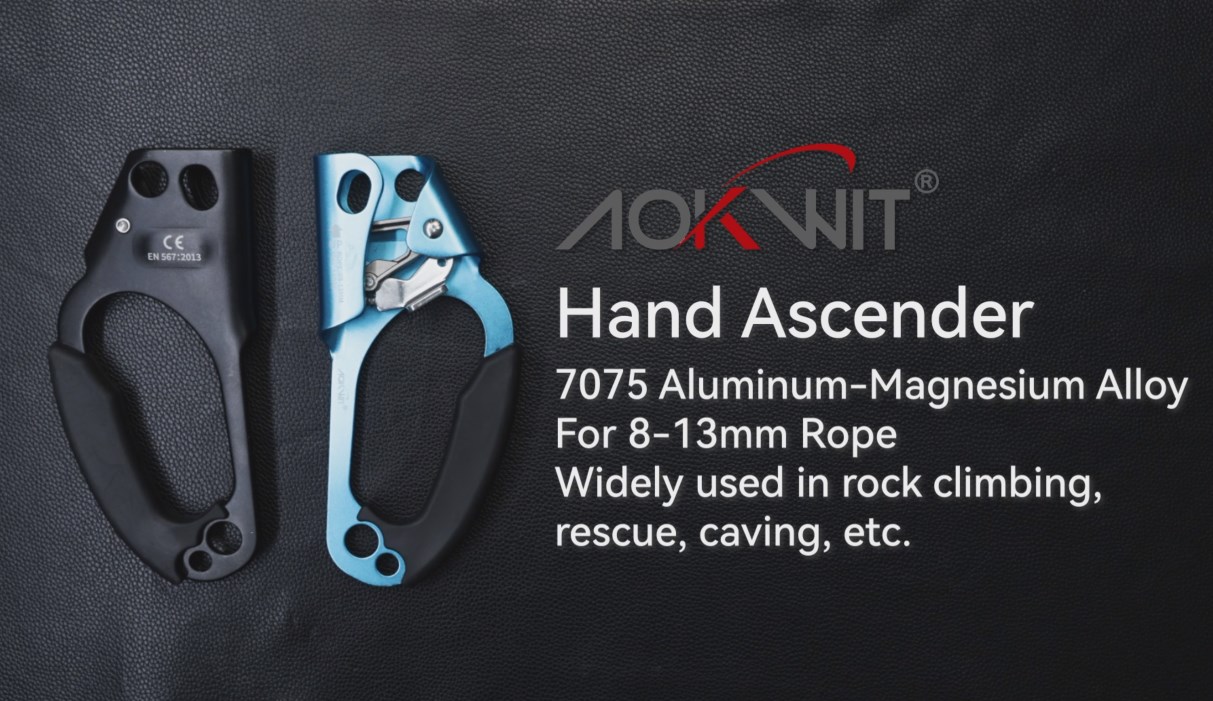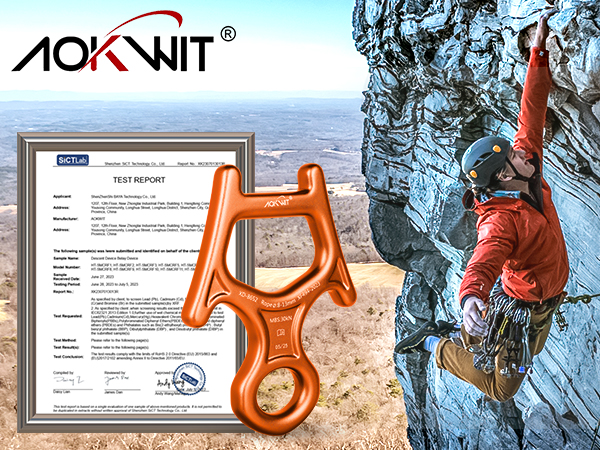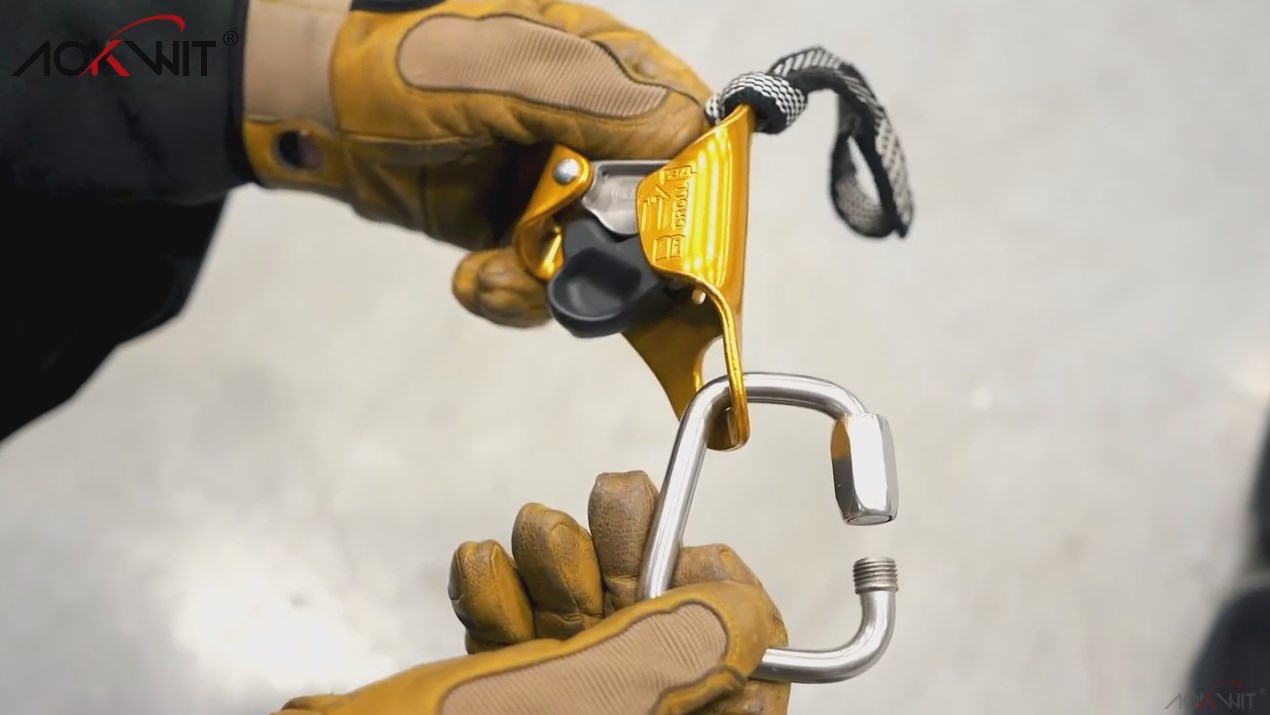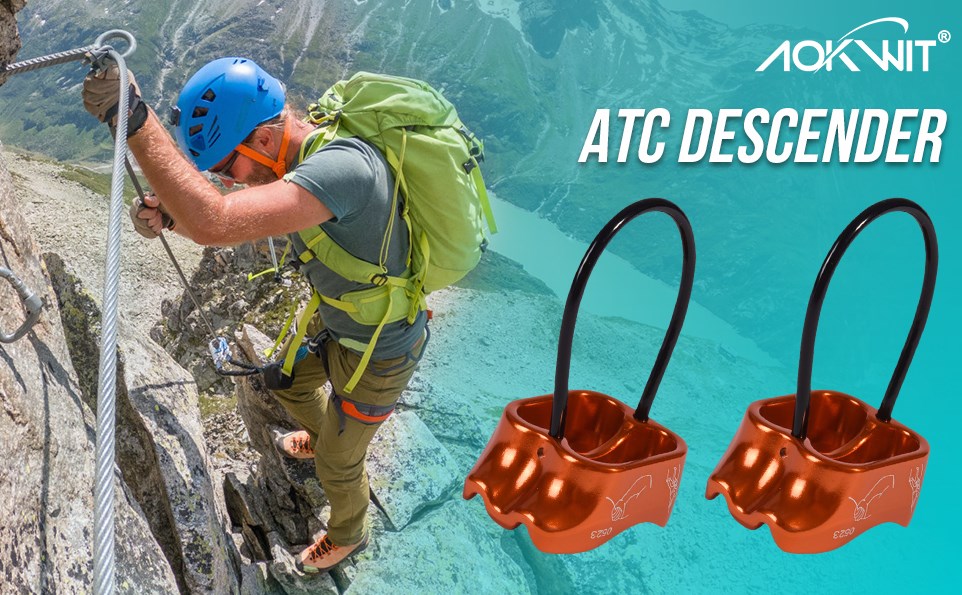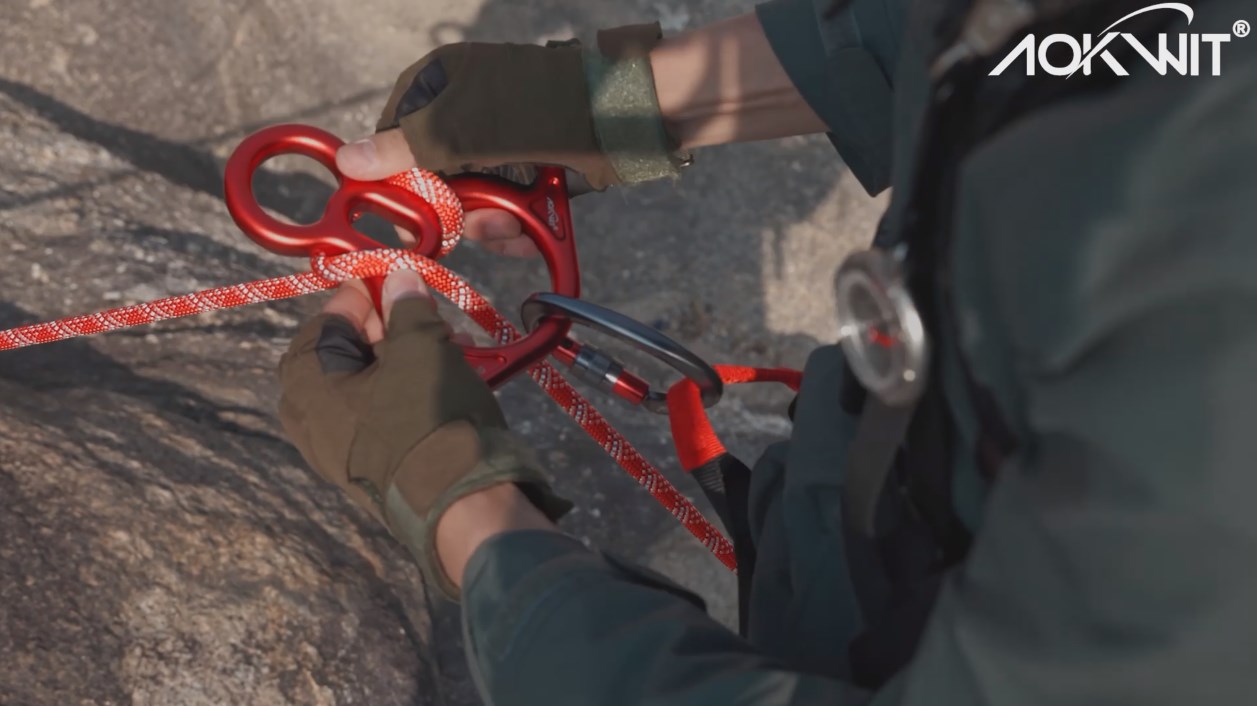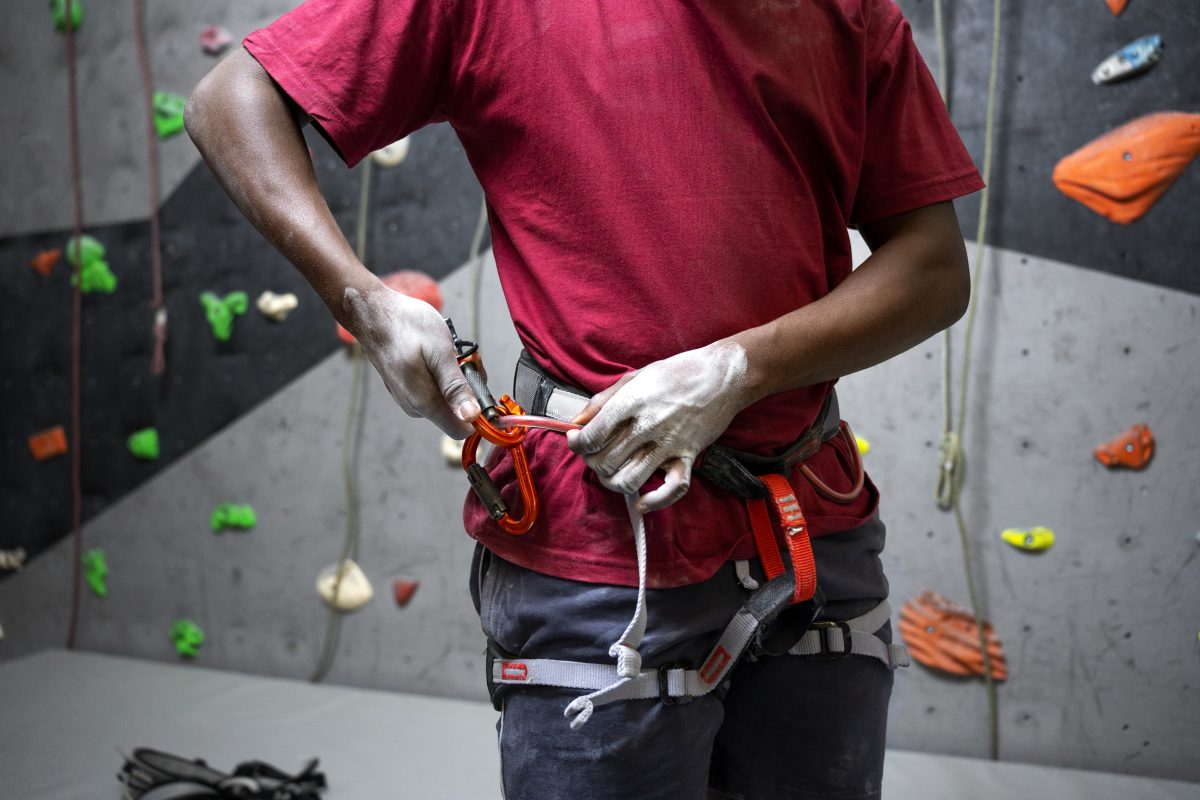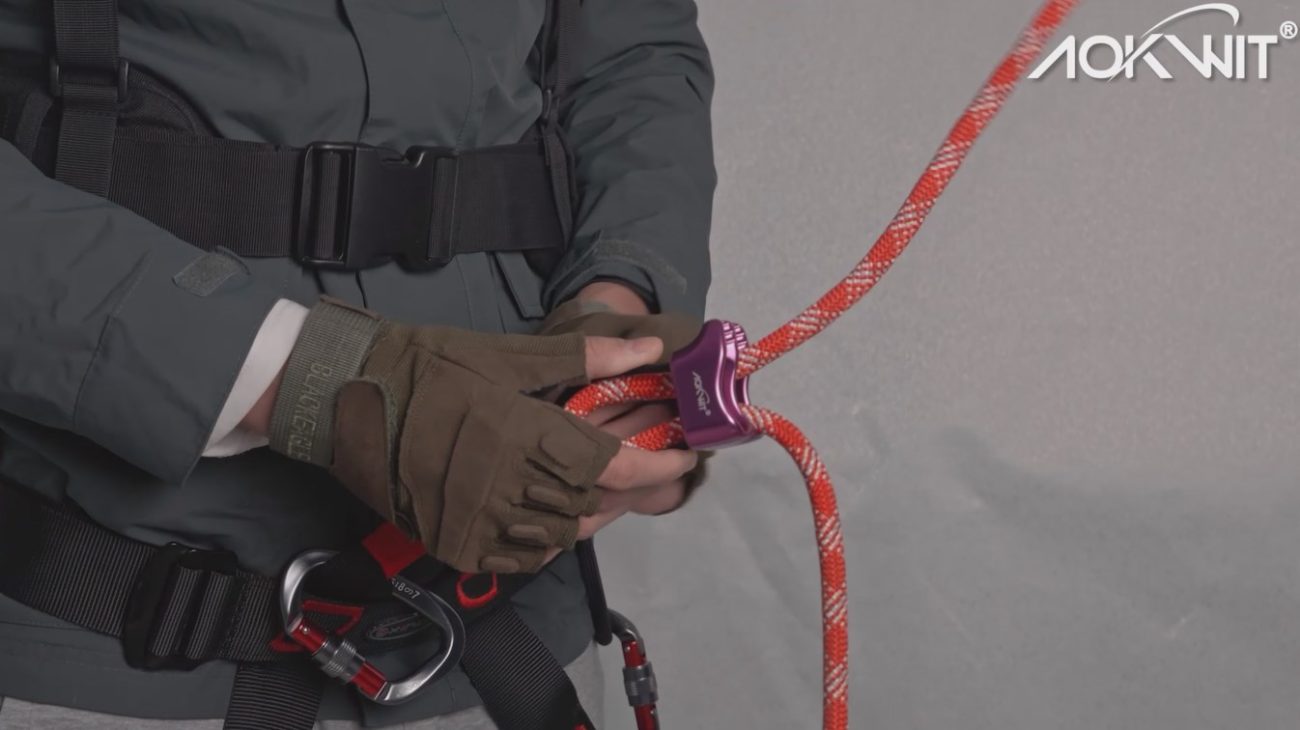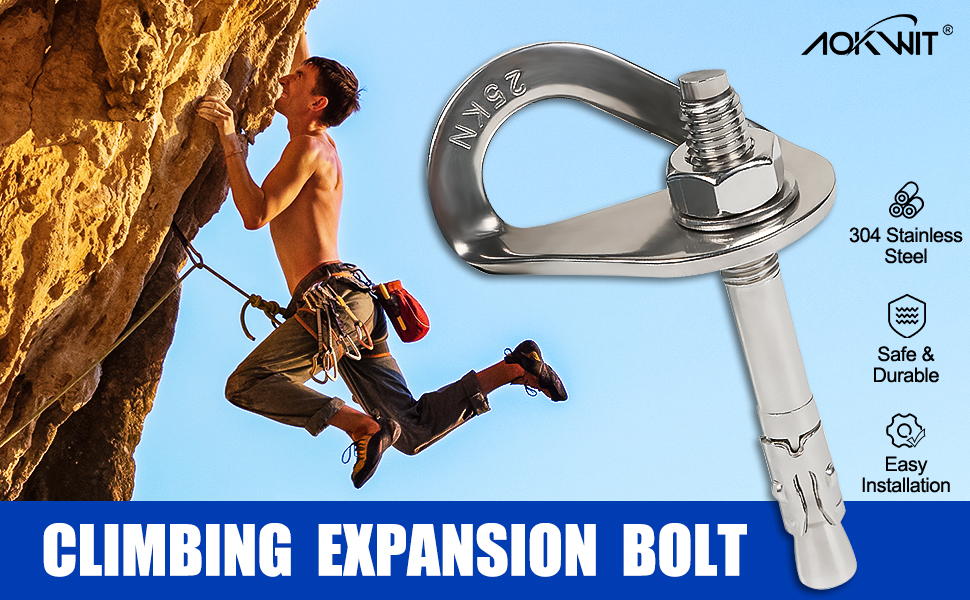How to Retrieve the Rope After Outdoor Sport Climbing?
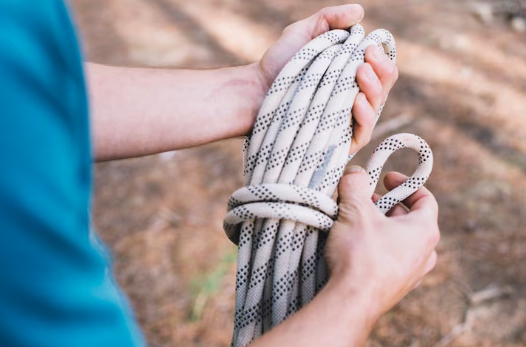
First, it’s important to understand the context: most outdoor sport climbing routes are pre-established. This means experienced climbers (“route setters”) have equipped the route with fixed protection points called bolt hangers (see diagram below). Climbers ascend along these predetermined lines.

(Left image: Bolt hanger – the flat plate sits against the rock, the long cylindrical bolt is drilled into the rock. Right image: Bolt hangers installed on a rock face.)
During route setting, setters consider climbing sequences, potential fall zones, rock integrity, and other risks. They often clear vegetation and define the approach path.
A typical sport climbing sequence is as follows:
- The Lead Climber (Pioneer): Ascends the route first, carrying the rope and quickdraws.
Clipping Protection: Upon reaching the first bolt hanger, the climber clips a quickdraw into the hanger. The rope, connected to their harness, is then clipped into the carabiner of the quickdraw (see image below). From this point onwards, they are protected by the rope and the belayer be

(The rope passes through: an orange carabiner + a nylon sling + a silver carabiner – together forming a quickdraw.)

(Image showing rope clipped into a quickdraw. )
- Continuing the Ascent: The climber continues ascending, placing quickdraws into successive bolt hangers and clipping the rope through them. In the event of a fall during the lead climb, the rope and the quickdraws clipped to the bolt hangers arrest the climber.


(Diagram showing the rope path after the lead climber has passed.)
- Reaching the Anchor (Top): The route typically terminates at an anchor consisting of two bolt hangers equipped with rap rings (lowering rings) or chains.

(Note: Following the redundancy principle of climbing safety, if one component fails, the other remains functional.)
The lead climber reaches the anchor. Using two quickdraws (or other appropriate gear), they clip each into a bolt hanger or the anchor chain links. The rope is then clipped into these quickdraws, establishing the top anchor point (see image below).
(Climber at the top anchor, having clipped quickdraws and the rope. Best practice is to clip the quickdraws directly into the bolt hangers, but clipping into chain links, as shown, is also common.)
(Note: Other anchor setup methods exist; this describes the most common, fundamental, and easily understood method for sport climbing.)
Once the rope is secured at the top anchor, subsequent climbers can ascend using this top-rope system.
Rope Retrieval (Cleaning the Route):
Briefly, the rope retrieval process involves:
- Secure to Anchor: The climber at the top anchor securely attaches themselves directly to the anchor bolts/chains (e.g., using personal anchors/slings with locking carabiners), not relying solely on the climbing rope.
(Diagram: Climber secured to anchor with a blue sling/locking carabiner while preparing the rope for retrieval through the lowering point.)
- Thread the Rope: The climber unties their original rope knot. The rope end is then threaded through both rap rings (or the master point of the anchor chain) designated for lowering/rappelling.
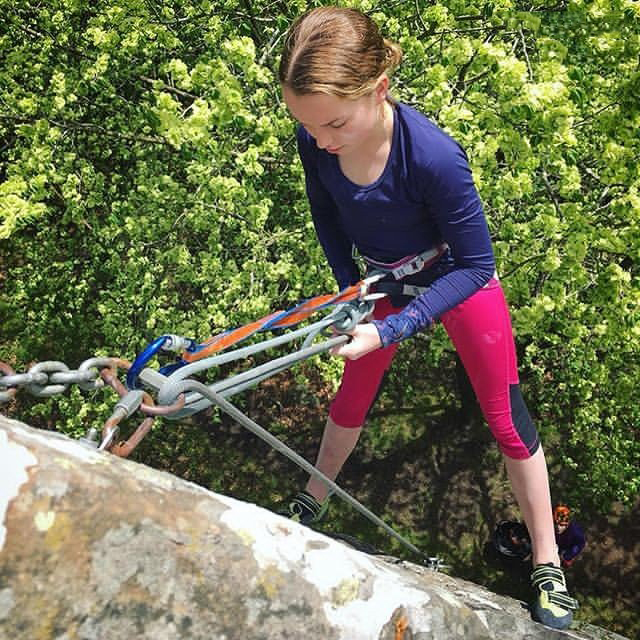
(Note: This involves specific technical steps not detailed here.)
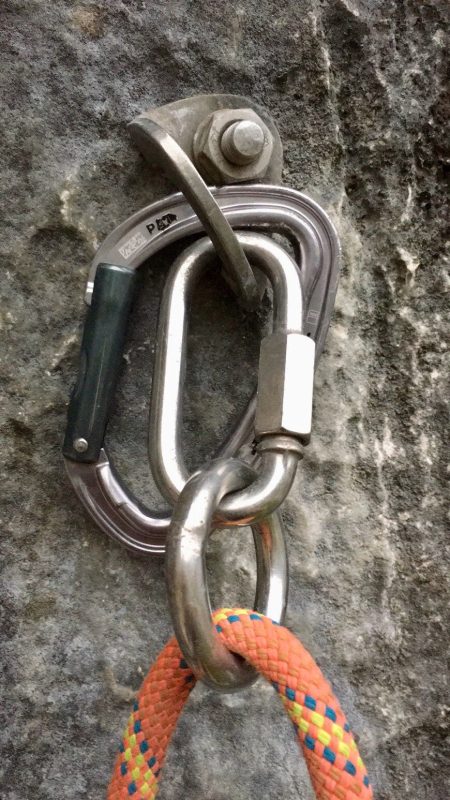
(Diagram: Orange rope threaded through the lowering rings.)
- Reconnect and Descend: The climber re-ties into both ends of the threaded rope using a secure knot (e.g., figure-eight follow-through). They then detach their personal anchor from the bolts/chains and are lowered to the ground by the belayer using the rope running through the anchor rings.
- Pull the Rope: Once the climber is safely on the ground, one end of the rope is pulled. The rope slides out of the anchor rings and falls to the ground, completing the retrieval.
Important Considerations:
Rope retrieval is a technical procedure involving inherent risks.
It should only be performed by experienced climbers after thorough practice in a controlled environment (like a climbing gym) or under direct supervision.
This overview provides a conceptual understanding for those curious about the process. It is imperative that inexperienced or untrained individuals do not attempt rope retrieval.
